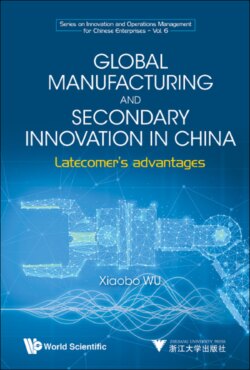Читать книгу Global Manufacturing and Secondary Innovation in China - Xiaobo Wu - Страница 12
На сайте Литреса книга снята с продажи.
1.1 New trend of globalization
ОглавлениеMore than 500 years have passed since Europe’s great maritime navigation era, and the world has gone through three major waves of globalization. The first wave of globalization started in the maritime navigation era, at the end of 15th century, and lasted about 300 years; the second started in the 18th century’s industrial revolution in the UK and came to an end at the beginning of the World War I; and the third started at the end of “Cold War” in the 1980s and continues till today.
Being the core of globalization, economic globalization is a market-driven free flow and the reasonable allocation of production factors like capital, technology, goods, information and labor around the world. It’s the result of the advancement of the world’s productive force, the progressing of science and technology, and the institutional arrangements of the countries concerned. Global trade activities, advanced science and technology, and improved communication transcend national economic barriers, and enable the unprecedented fast and wide free flow of production factors, including capital, technology, information, management and labor force. As a result, it also expands the international market and intensifies the international division of labor to make economies more open and integrated, forming an interdependent yet jointly developing globalized economic entity.
Compared with the two historical predecessors, this on-going economic globalization has two distinct features. First, emerging economies are exerting powerful influence. Contrary to the previous globalization patterns characterized by domination only by the developed countries, the present mode is featured with the influence of the emerging economies represented by Brazil, Russia, India and China, which are playing important roles in the world’s economic arena. In the post-financial-crisis era, developed countries are plagued with sluggish economic development and social well-being advancement, giving developing countries the opportunities to surpass and catch up. The momentum of globalization is now gradually shifting from the developed countries to the developing countries. Second, for a country aiming to obtain and maintain its global competitiveness, innovation would play a decisive role. The past two globalization trends centered on trade and circulation. Thanks to the macro trend of globalization, the economies driven by the factors and investments were very successful, underplaying the role of innovation. With the constant advancing of globalization, factor and capital are now circulating at a faster speed. As a result, economic and social returns driven by the factors and investments are gradually tapering down. At the same time, due to the limited total market resources and utilization efficiency, countries are being urged to adopt innovation as the fundamental driving force to power their economic growth, grasping and influencing global market’s demands so as to acquire and maintain the long term competitiveness.
In 2015, Premier Li Keqiang advocated to make the industrial innovation driven by the “Internet+Entrepreneurship and Innovation+Made in China 2025” an industrial revolution driven by China in the true sense. This revolution is the so-called “New Industry Revolution”. The novel economic globalization thereafter spawned will not only give tectonic quake to the global supply chain, industrial value chain and merchandise chain, but also bring everlasting influences to international trade, cross-border investment and global economic and trade governance. In the increasingly globalized world economy, China has advantages, conditions and opportunities. Firstly, via the regulation guidance from G20 Summit and other international events, China aims to build a world economy that is innovative, dynamic, coordinated and inclusive; secondly, under the strategic instructions of the Belt and Road Initiative, China is committed to the common discussion, construction, sharing and win-win; thirdly, with the powerful stewardship from the science and technological innovation and international investment, healthy and all-around economic interactions are being facilitated between countries. This also heralds a new round of economic globalization that is innovative, coordinated, inclusive and sustainable. China is becoming the shaper of new economic globalization.
